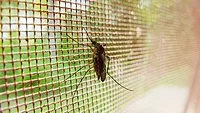6 Common Food Sanitation Mistakes–and How to Fix Them
All food establishments, whether U.S. Food and Drug Administration (FDA) or U.S. Department of Agriculture (USDA) regulated, are required to maintain sanitary conditions to ensure the safe production of food. Even though poor sanitation can cause harmful contamination of food and, in some cases, result in foodborne illness or even the loss of a life, some establishments fail to take sanitation seriously.
“We’ve all heard the saying that ‘the little things can cause the biggest problems,’” says Chris Celesta, Manager, Food Processing Sanitation with Spartan Chemical Co., Inc. of Maumee, OH, a recognized international leader in the manufacture of chemical specialty and industrial maintenance products since 1956.
That theory applies to sanitation within the food plants. Simple mistakes can have costly consequences, but the reality is, if a plant takes the time to address sanitation needs upfront, most common mistakes are easy to fix.
Proactive Ways to Avoid Sanitation Mistakes
Celesta and his team of experts at Spartan, compiled this list of the areas in a sanitation program where the top six most common mistakes occur—and how to fix them.
1. Personal hygiene. How often do you explain when, where and how to wash your hands to your employees? Do you emphasize the importance of taking showers, checking for cuts, wearing clean clothes, pulling back long hair and removing jewelry? Many people do not realize that the cracks in their hands and fingernails can be excellent carriers for those bad bugs. As simple as we might think it is to have people regularly and consistently wash their hands, it is equally important that we provide friendly reminders.
2. Sanitation product labeling. As much as processors try to “color code” their programs, cleaners and/or sanitizers will differ by the manufacturer. The important point to remember is that containers of mixed product used throughout the plant need to identify the product by name, along with any hazardous warning, so it can be traced back to your MSDS sheets. It is interesting to note, however, that many manufacturers not only include this information but also include the name, address, telephone number and website of the particular manufacturer so the facility has better access to specific information.
3. Personal protective equipment (PPE). It’s interesting to note how facilities will conduct annual training on PPE, says Celesta, but at some point in the year trainees neglect to use gloves or goggles when working with food sanitation products. When you are lax about PPEs, you put employees’ safety at risk and you take the chance of seriously affecting workers’ compensation costs. Employees may be taking unnecessary risks based on their experience with home products or because they have incomplete information about potential hazards associated with improper use of sanitation chemicals. It is up to supervisors to ensure that employees are properly informed and demand that PPEs are used all the time.
4. Sanitation chemical selection. Is your product hard water tolerant? Can your product be used on soft metals? Does your product exhibit grease-cutting or grease-emulsifying abilities? Is your manufacturer providing you the features and benefits you are looking for so you can use the right product at the right dilution to clean the right type of soils? Do your research before you select a chemical and work with your vendor to be sure you make the best choice and are using it under the right circumstances to maximize cost and efficiency and to minimize equipment erosion.
5. Proportioners or dispensing systems. If you turn your sanitation program over to people other than your supervisors, you are inviting trouble. The manufacturer recommends particular dilutions for the right reasons–ease of cleaning, soil removal, rinsing and managing your budget. However, in food processing plants, there are always a few “chemists” who like to turbo-charge their products, by mixing bleach with an alkaline-based product or creating their own formula, which, as we all know, can have disastrous consequences. Proportioners provide consistent use, consistent performance and allow you to work from your fixed budget.
6. Employee training. Training should focus on the fundamentals of sanitation, food microbiology and the role of employees in maintaining food safety of food products. Training must be continuous to provide clear and accurate information so the “human” element functions as well as your cleaning solutions and equipment do. Work with your vendor to find the best training programs on PPE, HAZCOM, proper sanitation chemical handling and effective cleaning procedures. A good training program frees up productivity so your people can be most effective doing their job in the limited time that is available.
Says Celesta, “Avoiding these common sanitation mistakes in the food processing facility means making the right choice in terms of supplier, chemicals, human resources and equipment. But overall, food companies that are committed to putting forth the best possible sanitation program at each and every step of the process will be the most successful at ensuring the safety and quality of their finished products.”
www.spartanchemical.com
Looking for quick answers on food safety topics?
Try Ask FSM, our new smart AI search tool.
Ask FSM →








